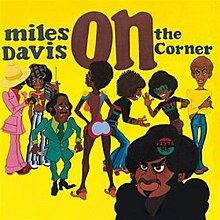
Miles Dewey Davis III was an American jazz trumpeter, bandleader, and composer. He is among the most influential and acclaimed figures in the history of jazz and 20th-century music. Davis adopted a variety of musical directions in a roughly five-decade career that kept him at the forefront of many major stylistic developments in jazz.

Jazz fusion is a popular music genre that developed in the late 1960s when musicians combined jazz harmony and improvisation with rock music, funk, and rhythm and blues. Electric guitars, amplifiers, and keyboards that were popular in rock and roll started to be used by jazz musicians, particularly those who had grown up listening to rock and roll.
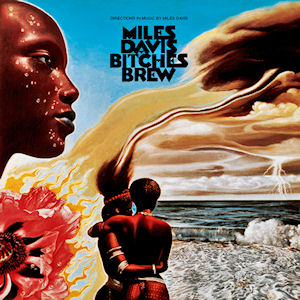
Bitches Brew is a studio album by the American jazz trumpeter, composer, and bandleader Miles Davis. It was recorded from August 19 to 21, 1969, at Columbia's Studio B in New York City and released on March 30, 1970, by Columbia Records. It marked his continuing experimentation with electric instruments that he had featured on his previous record, the critically acclaimed In a Silent Way (1969). With these instruments, such as the electric piano and guitar, Davis departed from traditional jazz rhythms in favor of loose, rock-influenced arrangements based on improvisation. The final tracks were edited and pieced together by producer Teo Macero.

Attilio Joseph "Teo" Macero was an American jazz saxophonist, composer, and record producer. He was a producer at Columbia Records for twenty years. Macero produced Miles Davis' Bitches Brew and Dave Brubeck's Time Out, two of the best-selling and most influential jazz albums of all time. Macero was known for his innovative use of editing and tape manipulation unprecedented in jazz and proving influential on subsequent fusion, experimental rock, electronica, post-punk, no wave, and acid jazz.

Filles de Kilimanjaro is a studio album by the American jazz trumpeter Miles Davis. It was recorded in June and September 1968 at Columbia 30th Street Studio in Manhattan, and released on Columbia Records in December of that year in the United Kingdom and in the United States the following February. The album is a transitional work for Davis, who was shifting stylistically from acoustic post-bop recordings with his Second Great Quintet to the jazz fusion of his subsequent "electric period". Filles de Kilimanjaro was well received by contemporary music critics, who viewed it as a significant release in modern jazz. Pianist Chick Corea and bassist Dave Holland appear on two tracks, tmarking heir first participation on a Davis album.
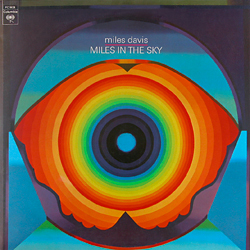
Miles in the Sky is a studio album by the jazz trumpeter and composer Miles Davis. It was released on July 22, 1968 through Columbia Records. It was the last full album recorded by Davis' "Second Great Quintet" and marked the beginning of his foray into jazz fusion, with Herbie Hancock playing electric piano and Ron Carter playing electric bass guitar on opening track “Stuff”. Additionally, electric guitarist George Benson features on “Paraphernalia”.

In a Silent Way is a studio album by the American jazz trumpeter, composer, and bandleader Miles Davis, released on July 30, 1969, on Columbia Records. Produced by Teo Macero, the album was recorded in one session date on February 18, 1969, at CBS 30th Street Studio in New York City. Macero edited and arranged Davis's recordings from the session to produce the album. Marking the beginning of his "electric" period, In a Silent Way has been regarded by music writers as Davis's first fusion recording, following a stylistic shift toward the genre in his previous records and live performances.

Jack Johnson is a studio album and soundtrack by the American jazz trumpeter, composer, and bandleader Miles Davis. It was released on February 24, 1971, by Columbia Records.

Big Fun is an album by American jazz trumpeter Miles Davis. It was released by Columbia Records on April 19, 1974, and compiled recordings Davis had made in sessions between 1969 and 1972. It was advertised as a new album with "four new Miles Davis compositions" One of three Davis albums released in 1974 and largely ignored, it was reissued on August 1, 2000, by Columbia and Legacy Records with additional material, which led to a critical reevaluation.

The Man with the Horn is an album released by Miles Davis in 1981. It was Davis's first new studio album since 1972’s On the Corner, his first recordings of any kind since 1975 and his first activity following a six-year retirement. The album title references his 1952 10-inch LP Young Man with a Horn.

The Complete Bitches Brew Sessions is a four-disc box set by jazz trumpeter Miles Davis compiling recordings between August 19, 1969, and February 6, 1970—including the 1970 double album Bitches Brew in its entirety—and released on Columbia/Legacy on November 24, 1998.

Agharta is a 1975 live double album by American jazz trumpeter, composer, and bandleader Miles Davis. By the time he recorded the album, Davis was 48 years old and had alienated many in the jazz community while attracting younger rock audiences with his radical electric fusion music. After experimenting with different line-ups, he established a stable live band in 1973 and toured constantly for the next two years, despite physical pain from worsening health and emotional instability brought on by substance abuse. During a three-week tour of Japan in 1975, the trumpeter performed two concerts at the Festival Hall in Osaka on February 1; the afternoon show produced Agharta, and the evening show was released as Pangaea the following year.

Pangaea is a live album by American jazz trumpeter, composer, and bandleader Miles Davis. It was originally released as a double album in 1976 by CBS/Sony in Japan.

The Complete Jack Johnson Sessions were recorded in April 1970 by Miles Davis, and released in September 2003. These sessions formed the basis for the 1971 album Jack Johnson, as well as some of the studio portions of Live-Evil.

Black Beauty: Miles Davis at Fillmore West is a live double album by the American jazz trumpeter, composer, and bandleader Miles Davis. It was recorded on April 10, 1970, at the Fillmore West in San Francisco, shortly after the release of the trumpeter's Bitches Brew album and the recording of Jack Johnson (1971). Black Beauty was produced by Teo Macero, Davis' longtime record producer. A jazz-rock and fusion album, Black Beauty captured one of Davis' first performances at a rock venue during the early stages of his electric period. At the concert, he led his band—saxophonist Steve Grossman, bassist Dave Holland, keyboardist Chick Corea, drummer Jack DeJohnette, and percussionist Airto Moreira—through one continuously performed set list which functioned as a musical suite for soloists to improvise throughout. He signaled changes from one piece to the next with phrases played on his trumpet.

In Concert is a live double album by the American jazz musician Miles Davis. It was recorded in 1972 at the Philharmonic Hall in New York City. Columbia Records' original release did not credit any personnel, recording date, or track listing, apart from the inner liner listing the two titles "Foot Fooler" and "Slickaphonics."
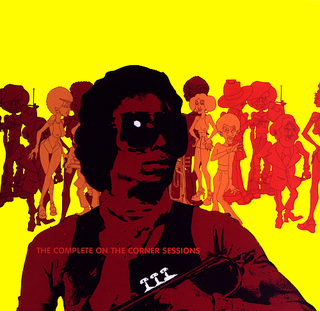
The Complete On the Corner Sessions is a posthumous box set by American jazz musician Miles Davis, released in the US on September 25, 2007, by Columbia Records and in the UK on September 29 on Legacy Recordings. Like other Davis box sets, the included material is taken from a wider chronology of sessions than the dates which actually produced the titular album. The Complete On the Corner Sessions compiles material from 1972 through 1975 which, due to lineup changes Davis made throughout the era, features over two dozen musicians.
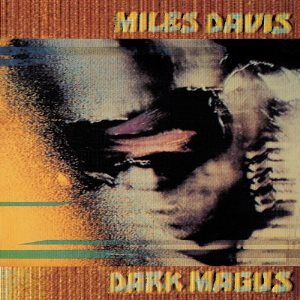
Dark Magus is a live double album by the American jazz trumpeter, composer, and bandleader Miles Davis. It was recorded on March 30, 1974, at Carnegie Hall in New York City, during the electric period in Davis' career. His group at the time included bassist Michael Henderson, drummer Al Foster, percussionist Mtume, saxophonist Dave Liebman, and guitarists Pete Cosey and Reggie Lucas; Davis used the performance to audition saxophonist Azar Lawrence and guitarist Dominique Gaumont. Dark Magus was produced by Teo Macero and featured four two-part recordings, titled with the Swahili numerals for numbers one through four.

Panthalassa: The Music of Miles Davis 1969–1974 is a remix album by Miles Davis, released on February 16, 1998, by Sony Records. It contains compositions from prior albums, including In a Silent Way (1969), On the Corner (1972), and Get Up With It (1974), remixed by Bill Laswell; it is subtitled "Reconstruction and Mix Translation by Bill Laswell". The album was composed as a dark, continuous tone poem divided by four sections of Davis' jazz fusion recordings. Panthalassa received generally positive reviews from music critics and sold well, charting at number four on the Billboard Top Jazz Albums.

Directions is a compilation album by American jazz musician Miles Davis, released in 1981 by Columbia Records. It collects previously unreleased outtakes that Davis recorded between 1960 and 1970. Directions was the last of a series of compilation albums—mostly consisting of, at that time, previously unreleased music—that Columbia released to bridge Davis' recording hiatus that ended with the Man with the Horn in July 1981.
